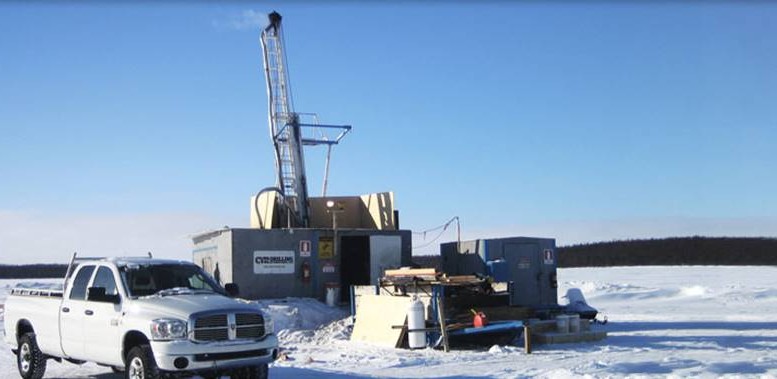VANCOUVER — Prospect generator CanAlaska Uranium (TSXV: CVV; US-OTC: CVVUF) is not commonly associated with diamonds, but on May 18 it announced a $20.4-million option agreement with De Beers Canada on 75 “kimberlite-style” targets staked in Saskatchewan’s northwestern Athabasca basin.
The company acquired the claims after its vice-president exploration, Dr. Karl Schimann, reviewed a high resolution airborne geophysical survey carried out by the Saskatchewan Geological Survey in 2011. The results revealed a series of discrete magnetic anomalies with a shallow signature northeast of the Carswell structure and close to a large crustal structure, the Grease River Shear Zone.
“This was a little bit of a rabbit out of the hat for us. Karl came to me one day and showed me these images, and we could see small dots on the greater survey,” explained president and CEO Peter Dasler during an interview.
“We identified these very distinct magnetic anomalies in the middle of at least one kilometre of barren sandstone, which shouldn’t return that sort of geophysical signatures. We also knew that down-ice from that location there were a whole bunch of kimberlitic indicator minerals in Alberta. We staked what we thought were the best targets, and left some ground so we wouldn’t be lonely,” he continued.

The Athabasca Kimberlite project. Credit: CanAlaska Uranium.
Historic exploration work in the 170 sq. km area that De Beers has optioned is quite limited. The down-ice kimberlitic tracer elements identified in Alberta include chromite, pyrope and eclogitic garnets. Basement rocks below the Athabasca sandstone form part of the Rae Province, which hosts diamondiferous kimberlites in Nunavut. CanAlaska suspects that the Buffalo Hills and Birch Mountain kimberlite fields in Alberta lie on the same structural trend as the project area.
“The magnetic survey made a big difference, and I don’t think anyone really thought of looking for diamonds there before,” Schimann added. “Plus the presence of the Rae Province hadn’t really been defined prior to work by the Saskatchewan geological survey because of the sandstone cover. So the work by the government has definitely been fruitful.”
The multi-stage option agreement could allow De Beers to earn up to 90% in the project within seven years.
The diamond producer can earn 51% by spending $1.4 million in year one, and then has two years to invest another $2 million to bump its interest to 70%. Once the agreement hits that threshold, CanAlaska maintains participation rights to prevent further dilution of its interest.
Assuming DeBeers spends another $3 million over a one-year period its interest jump to 80%, while it can increase its stake to 90% by investing $14 million over the following three years.
Priority work will reportedly include a detailed airborne survey and diamond indicator sampling in the vicinity of the targets, followed by drill testing.
“The agreement allows [us] the opportunity evaluate early results and then commit to joint fund exploration between either the 70% or 80% levels,” Dasler explained. “We really didn’t want to burn off our treasury on the project, and we had a lot of interest from people in the diamond industry. We are a uranium company that’s focused on that side of our portfolio, but we’d like to give our shareholders some benefit here. It’s just another arrow in our quiver that will continue to attract attention from the market.”
The agreement also provides De Beers with flexibility on expenditures depending on results, which makes sense considering the diamond prospects are very early stage.
CanAlaska has traded within a 52-week window of 9¢ and 65¢, and closed up 22% following the De Beers news at 58¢ per share. The company maintains 22.5 million shares outstanding for a $12.4 million press-time market capitalization, and reported $1.1 million in working capital at the end of January.


Be the first to comment on "CanAlaska’s diamond play attracts $20M option from De Beers"